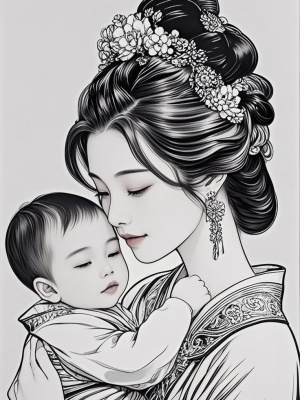The Ultimate Guide to Watercolor Pencil Coloring Books
Watercolor pencil coloring books have gained immense popularity among artists and hobbyists alike. Combining the precision of colored pencils with the fluidity of watercolors, these books offer a unique and versatile medium for creative expression. Whether you're a beginner or an experienced artist, watercolor pencil coloring books provide endless opportunities to explore color blending, shading, and texture.
Why Choose Watercolor Pencil Coloring Books?
Watercolor pencil coloring books stand out from traditional coloring books due to their unique blend of dry and wet media. Here are some compelling reasons to try them:
- Versatility: You can use them dry for detailed work or activate them with water for painterly effects
- Portability: Easier to carry than traditional watercolor sets
- Control: More precision than regular watercolors
- Forgiving Medium: Mistakes can often be corrected by lifting color with water
Essential Techniques for Watercolor Pencil Coloring
Dry Application
When using watercolor pencils dry, they behave similarly to regular colored pencils. This technique is perfect for adding fine details, textures, and initial layers of color. Many artists prefer to start with dry application before adding water to blend colors seamlessly.
Wet-on-Dry Technique

This involves applying dry pencil to paper first, then using a wet brush to activate the pigment. It's excellent for controlled blending and creating soft gradients. For best results, use high-quality watercolor paper that can handle multiple layers.
Wet-on-Wet Technique
Here, you wet the paper first before applying the pencil. This creates beautiful, fluid effects similar to traditional watercolor painting. It's particularly effective for backgrounds and large color washes.
Choosing the Right Materials
The quality of your materials significantly impacts your watercolor pencil coloring experience. Consider these essential components:
- Paper: Opt for 140lb (300gsm) watercolor paper with a cold-press texture
- Pencis: Professional-grade watercolor pencils like Faber-Castell Albrecht Dürer or Derwent Watercolor
- Brushes: Synthetic round brushes in various sizes (2, 4, 6 are good starters)
- Other Tools: Water container, paper towels, and a spray bottle
For more art supply recommendations, check out our AI Art Guide which includes comprehensive material suggestions.

Problem-Solution Matrix for Common Challenges
| Problem | Solution |
|---|---|
| Colors appear dull | Use less water or layer more pigment before activating |
| Paper warping | Stretch paper beforehand or use heavier weight paper |
| Difficulty blending | Work with analogous colors and blend while still wet |
| Unwanted hard edges | Use softer brushes and work quickly before pigment dries |

Creative Applications and Project Ideas
Watercolor pencil coloring books aren't just for filling in pre-drawn designs. Here are some creative ways to use them:
- Create custom greeting cards for special occasions like Mother's Day
- Design unique bookmarks with personalized themes
- Combine with other media like ink or gouache for mixed media pieces
- Use as preliminary sketches for larger watercolor paintings
Conclusion
Watercolor pencil coloring books offer a perfect bridge between drawing and painting, making them ideal for artists of all skill levels. With the right techniques and materials, you can create stunning artworks that combine the best of both worlds. Whether you're looking to relax with some therapeutic coloring or develop your artistic skills, these versatile books provide endless creative possibilities.
For more artistic inspiration and techniques, explore our AI Painting Guide which covers various digital and traditional art methods. Remember, the key to mastering watercolor pencils is practice and experimentation - so grab your coloring book and start creating!